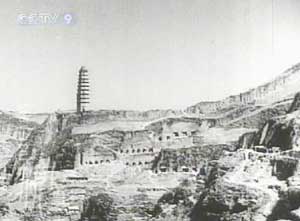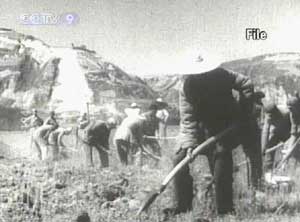Source:
01-13-2006 17:43

By 1943, Mao Zedong was predicting that victory over the Japanese was just around the corner. But still, the fighting at the front remained fierce, and keeping the combatants supplied was something of a battle in itself. Supporting the front line were such major production bases as the Shaanxi-Gansu-Ningxia Border Region. The slogan of the day was, “Production Combined with Battle”, and in this an outstanding example was set by the production campaign carried on at Nanniwan, southeast of Yan’an, by the 359th Brigade of the 120th Division of the Eighth Route Army. The exploits of the people there are commemorated in the song, “Nanniwan”, which is still heard today.
Anna Chennault is a well-known figure both in China and the United States. Born in Beijing in 1925, she graduated from Hong Kong’s Lingnan University in 1934. She then became the first woman reporter for the Kunming Office of the Central News Agency. During the war, she established her reputation as a journalist with her reports on Claire Lee Chennault, a general with the American Volunteer Group, and the exploits of the famous Flying Tigers squadron he commanded. After the war’s end, in 1947, she and the general married in Shanghai.

By 1943, Japan’s defeat was only a matter of time. In places like Chongqing, even though the bombing continued, people were displaying a previously unknown confidence in victory. The improved morale was reflected in the growing numbers of educated Chinese young people signing up to fight the Japanese. On every front, in China and the Pacific, the Japanese were suffering a succession of heavy defeats. And so, 1943 was the year when the anti-fascist allies moved from a posture of strategic defence, to one of strategic attack.
Editor:Wang Ping

